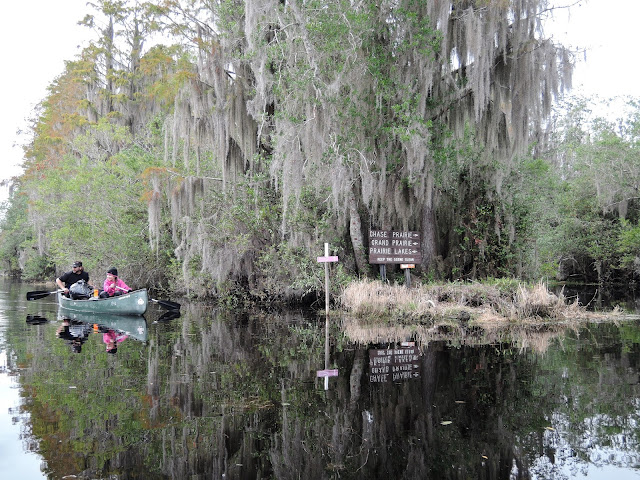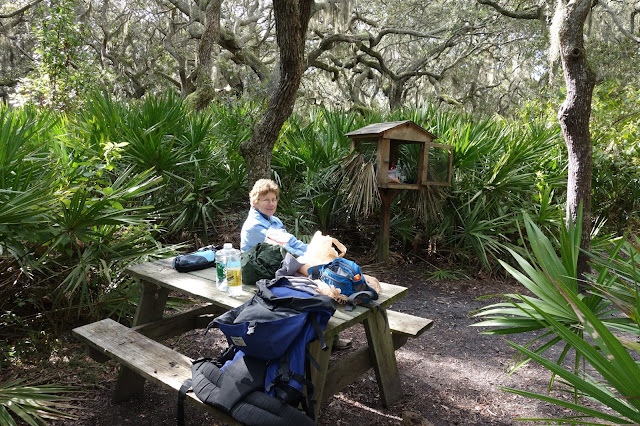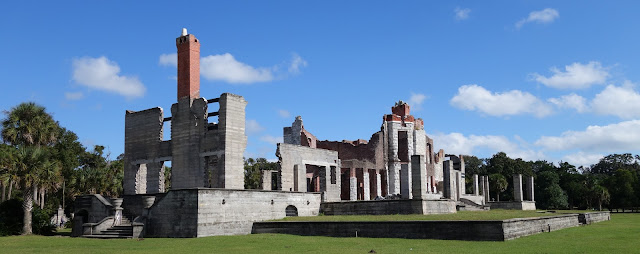Uploading photos at our motel at Savannah and finishing the blog for Washington DC
The Harris Neck refuge is 45 miles south of Savannah, Georgia, one of seven coastal refuges in the Savannah Coastal Refuges Complex.
CootsLongleaf pine
The center of the refuge was a WWII airfield and pilot training facility.
Ants in the sandy soil.
White ibis
Live oak with Spanish moss
Day 19 19 Nov 2015: Darien to Hog Hammock, Sapelo Island (10 miles)
The ferry to Sapelo Island left from Meridian GA.
We'd arranged to stay with Cornelia Bailey at The Wallow at Hog Hammock. When we got to Sapelo, no one seemed to know we were coming. However, Yvonne saw we were stranded, knew Cornelia was on the mainland and arranged for Cornelia's nephew, Alfred, to give us a ride.
The Wallow at Hog Hammock
Our room
Alfred's sister, Francine, brought us a map and organised Marvin Grovner to bring us some bikes to get around the island.We headed north, passing the Baptist Church as the road deteriorated beyond the settlement.
We crossed the bridge to Cabretta Island, 2.7 from Hog Hammock.
Cabretta Beach where 160 turtles nested in 2015Midge pushing her bike over the soft sand on the road back from Cabretta Beach. We passed a campground with electric Christmas lights, screens on the lean-tos and nobody there.
Creek behind Cabretta Island
Reynolds mansion on south end of Sapelo Island. Groups can book rooms and meals there.
The original Mansion was designed and built from tabby, a mixture of lime, shells and water, by Thomas Spalding, an architect, statesman and plantation owner who purchased the south end of the island in 1802. The Mansion served as the Spalding Plantation Manor from 1810 until the Civil War. It fell into ruin after being damaged by Union attack during the Civil War and was later purchased and rebuilt by Detroit automotive engineer Howard Coffin in 1912. Tobacco heir Richard Reynolds purchased the property in 1934 and allowed the University of Georgia to use the facilities for marine research. Following Reynolds' death in 1964 the Mansion and most of the island was obtained by the Georgia Department of Natural Resources in 1975. Sapelo Island National Estuarine Research Reserve and University of Georgia Marine Research Facilities are still located on the island. [from http://gastateparks.org/lodges/reynolds/about/ ]
Day 20 20 Nov 2015: Sapelo Island
Live oak
Midge with one of the horses at Yvonne's farm on Wilson Road, Hog Hammock.
Palmetto palm leaf.
We walked along the nature trail on the seaward side of the Reynolds Mansion.
Bayberry
The trail ended at Nanny Goat Beach
We cycled to the lighthouse at the south end of Sapelo.
University of Georgia Marine Institute Day 21 21 Nov 2015: Sapelo Island to Woodbine GA (55 miles)
We walked to the Behavior Cemetery in the morning. The first route we tried was blocked by a drainage canal.
We eventually reached the locked cemetery, surrounded by barbed wire and No Trespassing signs.
Ruins of a tabby sugar mill, by the old Tabby House Museum.
Day 22 22 Nov 2015: Woodbine/Kingsland GA to Okefenokee and back (76 miles)
Communal kitchen at Walkabout Camp and RV Park. We were the only tent campers and had the whole communal facility to ourselves -- tables, books, TV and lounge included. The park is owned by an Australian who runs it Aussie/Kiwi style.
After breakfast, we headed for the Okefenokee Swamp.
The Okefenokee Swamp is a vast bog inside a saucer-shaped depression 38 x 25 miles, once part of the ocean floor. Two rivers start in the swamp. St Marys forms the GA FL border and flows east to the Atlantic. The Suwannee River flows south through Florida into the Gulf of Mexico.
There were several large alligators
Dragonfly that landed on our boat
Wood stork in a lake of waterlilies in the Chesser Prairie.
Chesser Island homestead started in the mid-1800's by a self-sufficient family.
Cash crops for the family were sugar cane and turpentine. This is a small plot of sugar cane, used each year to demonstrate the process of making cane syrup.
Rollers turned by mule power and used to squeeze juice from the sugar cane.
Fire for boiling the cane juice to evaporate enough water to make syrup.Day 23 23 Nov 2015: Kingsland GA to St Mary's GA (11 miles)
Signs at St Mary's GA, where we got the ferry to Cumberland Island, now mostly comprised of Cumberland Island National Seashore.
We got a briefing at St Mary's before boarding the ferry.
Leaving St Marys
Map of Cumberland Island
Dock at Ice House Museum, Cumberland IslandWe got off the ferry at Sea Camp Ranger Station, where we were assigned a campsite.
A 1-mile walking trail led from the Sea Camp landing to Sea Camp Beach campground.
Our campsite at Sea Camp Beach included a table and food safe.
Starting in 1884, Thomas Carnegie (brother of the more famous Andrew) and his wife Lucy built a mansion, Dungeness, on the site of a former home.
As we got closer to the beach, large flocks of tree swallows flew overhead and seemed to dive into the dunes.
As we got closer we could see they were flying just over the surface of a small freshwater pond.
Those swallows at the bottom of the flock would lower their heads for an instant to get a drink.
Beach morning glory
Large live oak
Before turning in for the night, we walked by moonlight to the beach.
Day 24 24 Nov 2015: Cumberland Island to Kingsland GA (11 miles)
Yesterday before dinner we started our small hiking stove only to find it had a leaky gasket. Fortunately we had enough food we could eat cold, though cold porridge oats for breakfast won't become a fond favorite.
Today we're taking a 5-hour tour of the island organised by the Park Service, so Midge made sandwiches to take for lunch.
Our guide was Nick Roll, a National Park Service ranger who has been on Cumberland for several months. The 30-mile tour was in a van over rough roads.
Despite being new to the job, Nick's knowledge of the island seemed encyclopedic,
especially the island's cultural history including early plantation owners.
and another, more modest, Carnegie mansion at Plum Orchard.
Air conditioning for the house.
Indoor swimming pool
Building at The Settlement, north end of Cumberland Island.
First African Baptist Church, The Settlement. In the 1890's, The Settlement was established for African American workers. The First African Baptist Church was established in 1893 and then rebuilt in the 1930's. It was the site of the September 1996 wedding of John F. Kennedy, Jr. and Carolyn Bessette. [from http://www.ohranger.com/cumberland-island/poi/first-african-baptist-church-settlement ]
We left Cumberland after the tour ended and watched as the sun went behind the clouds over the island.
We spent the night in Kingsland GA. Today we drove south to Merritt Island. This is the location of the Kennedy Space Center and also the Merritt Island National Wildlife Refuge.
We took a short walk at the visitor center.
Live oak
American Beautyberry Callicarpa americana From summer to late winter, the clusters of glossy, purple berries encircling the stems make American beautyberry eye-catching. The flowers provide bees and butterflies with nectar. Armadillos, squirrels, deer, and racoons dine on the colorful berries. Early settlers and Native Americans crushed the leaves and rubbed them on their skin to repel mosquitos. [From a sign at the refuge]
Great blue heron
Later we went on the refuge's 7-mile, one-way Black Point Wildlife Drive where we saw 18 bird species including roseate spoonbills, snowy egrets, little blue herons, wood storks and this raft of American coots.
Near Mosquito Lagoon
.oOo.
















































































































No comments:
Post a Comment